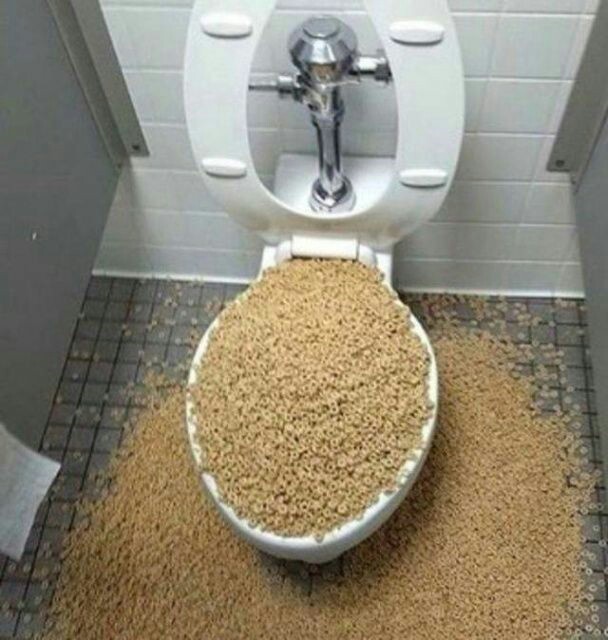Are You Allowed to Dispose of Food in the Toilet?
Are You Allowed to Dispose of Food in the Toilet?
Blog Article
How do you really feel when it comes to Think Twice Before Flushing Food Down Your Toilet?

Introduction
Lots of people are commonly confronted with the problem of what to do with food waste, especially when it involves leftovers or scraps. One usual inquiry that develops is whether it's all right to purge food down the bathroom. In this short article, we'll explore the reasons people could consider purging food, the effects of doing so, and different techniques for proper disposal.
Reasons individuals may consider purging food
Lack of recognition
Some individuals might not recognize the potential damage triggered by purging food down the toilet. They might mistakenly believe that it's a safe method.
Comfort
Purging food down the commode might seem like a fast and very easy remedy to dealing with undesirable scraps, specifically when there's no nearby garbage can available.
Negligence
Sometimes, people might merely pick to flush food out of sheer laziness, without taking into consideration the effects of their actions.
Repercussions of flushing food down the bathroom
Ecological effect
Food waste that ends up in rivers can contribute to air pollution and damage marine ecosystems. Furthermore, the water utilized to purge food can stress water sources.
Pipes concerns
Flushing food can cause stopped up pipelines and drains pipes, creating costly pipes repair services and troubles.
Kinds of food that should not be flushed
Coarse foods
Foods with fibrous appearances such as celery or corn husks can obtain entangled in pipes and cause blockages.
Starchy foods
Starchy foods like pasta and rice can soak up water and swell, bring about clogs in pipelines.
Oils and fats
Greasy foods like bacon or cooking oils should never be flushed down the toilet as they can solidify and trigger clogs.
Correct disposal approaches for food waste
Making use of a garbage disposal
For homes equipped with waste disposal unit, food scraps can be ground up and purged via the plumbing system. Nonetheless, not all foods appropriate for disposal in this fashion.
Recycling
Certain food packaging materials can be recycled, decreasing waste and minimizing environmental impact.
Composting
Composting is an environmentally friendly means to deal with food waste. Organic materials can be composted and used to enhance soil for gardening.
The value of appropriate waste monitoring
Decreasing environmental injury
Correct waste monitoring techniques, such as composting and recycling, assistance reduce pollution and maintain natural resources for future generations.
Safeguarding plumbing systems
By staying clear of the method of flushing food down the toilet, property owners can avoid pricey pipes fixings and preserve the honesty of their pipes systems.
Final thought
Finally, while it might be tempting to flush food down the commode for convenience, it is necessary to comprehend the potential repercussions of this activity. By taking on correct waste monitoring techniques and getting rid of food waste sensibly, people can contribute to healthier pipes systems and a cleaner environment for all.
THINK TWICE BEFORE FLUSHING FOOD DOWN YOUR TOILET IN FALLBROOK CA
Let’s be honest, we’re really supposed to be tossing rotten or leftover food in the compost bin or trash can. But many people like to place scraps of food down the drain of, say, their kitchen sink. That’s why the garbage disposal was invented: so we can continue to place certain foods down the drain without clogging our drain in the process. Smart.
But not all of us have the luxury of having a garbage disposal installed. So, you might continue to shove food down your sink drain anyway – or worse: you might flush them down your toilet! If you’re guilty of doing the latter, you’re going to want to stop, and here’s why:
Toilet Drains Aren’t Designed to Handle Food!
There’s your answer: food just doesn’t belong in your toilet. It may seem like your toilet drain is wider than the drains of your sinks, but truth be told, that isn’t actually the case. The narrower pipes of your toilet leave your plumbing at risk for clogging if you do happen to flush your food. In addition, food doesn’t break down as quickly that toilet paper and human waste do. In turn, this leaves your toilet at risk for a nasty clog.
Although a flush of a tiny pinch of food every now and then isn’t going to completely damage your toilet, there are certain foods that should absolutely not be flushed in your toilet at all. These include starchy foods like mashed potatoes, grains, hard pieces of food that are slow to break down, and fats and oils.
The latter categories of food are particularly problematic as they may harden, expand as they absorb water, break down slowly in your system, or generally create the perfect obstruction with their gelatinous composition. These are all things you don’t want in your plumbing system!
Experiencing a Toilet Clog?
Nobody’s perfect, and we all make mistakes. Sometimes one of the mistakes people make is flushing food down their toilet and later realizing that it wasn’t the best thing to do once they see that their toilet is now clogged. Uh-oh!

We hope you liked our piece about . Thanks so much for taking a few minutes to read through our blog. Liked our blog entry? Please quickly share it. Let another person check it out. Thanks a lot for going through it.
Click Here Report this page